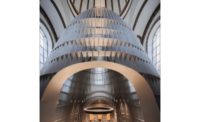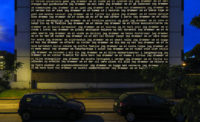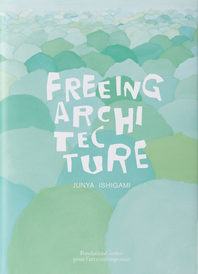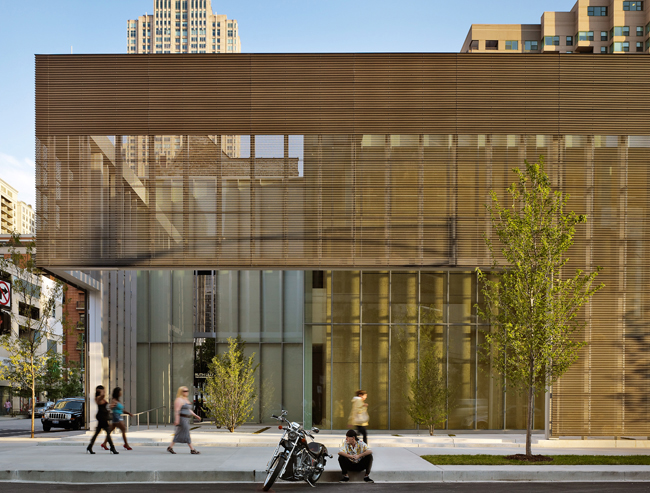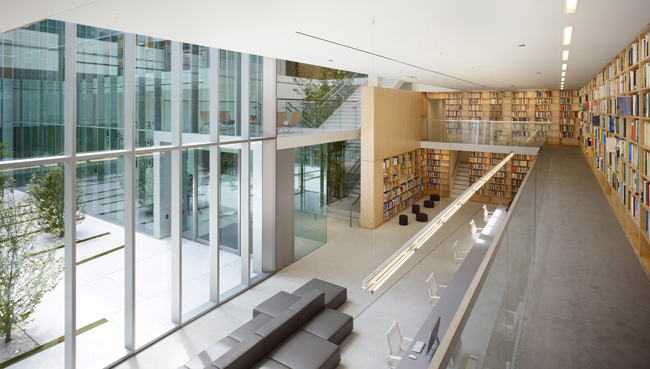Poetry Foundation
Open Verse: At once opaque and transparent, an understated new poetry center offers a place of quiet study while inviting the outside in.






















































Architects & Firms
Chicago
In the romantic version of the story, creative genius endures poverty in pursuit of a higher calling. Rodolfo and Mimì's story would not have been La Bohème without the famously shabby garret, from which Rodolfo's poetry flowed. But as Chicago's new center for the Poetry Foundation by John Ronan Architects shows, a windfall of cold cash certainly can help when trying to make concrete an architectural idea.
The building, which opened in June, has its origins in a classic rags-to-riches story. Poetry magazine, founded by Harriet Monroe and published continuously since 1912, lurched along on a shoestring budget for most of its history. The magazine's life was turned upside down in 2002 when Indianapolis pharmaceutical heiress Ruth Lilly bequeathed about $200 million to the little publication. Soon after, the Poetry Foundation (which grew out of the Modern Poetry Association) was formed. One of its early decisions was to build a permanent home for Poetry, which had long housed its collection of books, manuscripts, and recordings in the basement of Chicago's Newberry Library and hosted readings in borrowed spaces around the city. Predictable controversy erupted when some of the foundation's trustees opposed the decision, decrying the hubristic palace they believed would result.
John Ronan says he steered clear of the internal politics, keeping his sights on the task at hand. Initial visioning sessions revolved around the question “What is a building for poetry?” “There's no paradigm for this building,” the architect points out. In any case, what he has created is not trophy architecture. In keeping with the art form it serves, the new Poetry Foundation is a respectful, restrained building that employs an economy of means and methods, just as a good poem employs an economy of language.
While giving physical presence to the foundation, the new 22,000-square-foot building also had to reflect its mission: to help poets pursue their art, and to raise poetry's profile and bring it to the public by making it visible and accessible. The choice of this urban site—a corner lot in Chicago's North River neighborhood surrounded by residential towers—and the decision to make transparency central to the building design address these desires. In addition to offices, the client requested a library to house its 30,000 noncirculating volumes, a dedicated space for readings, and a gallery for related exhibitions. One of the more unusual requirements was for a garden that could be used to host events. Exploring this element drove the initial design investigation and resulted in a 4,000-square-foot courtyard carved out of the site's north side.
To define the site's boundary—without rendering the building opaque or fortresslike—Ronan wrapped the perimeter with a corrugated, oxidized zinc wall, which, around the garden, becomes perforated and veil-like, blurring the lines between inside and out.
As you pass through a narrow corridor formed by the metal screen and the glass front of the performance space, you reach the garden and, through double-height windows, see the library's colorful patchwork of book spines lining shelves on two levels. Baltic birch plywood embraces the interior by forming the shelves as well as paneling. The building is conceived as layers of materials—zinc, glass, and wood—that compress and then separate to create different spaces. “The idea is that this spatial narrative unfolds as visitors move through and between these layers,” says Ronan. “We were trying to achieve a transcendent materiality where we take very humble materials and then ennoble them in some way—not unlike what a poet would do with words.” For example, the team spent months developing the sandblasted concrete (for the ground-level floors that extend out into the garden), which incorporates white silica and cement and specks of slag, lending it a warmth and complexity.
Inside, public spaces occupy the ground floor while the offices upstairs are organized according to operations: administrative, magazine and website, and programs. The north, garden-facing glass, which jogs in and out, admits abundant, diffuse light, even on an inclement day, and helps to visually connect the different spaces. To balance the conflicting demands of a building that celebrates its urban surroundings while functioning as a center of quiet work, the team employed a host of acoustic strategies, such as varied surface materials and an interior glass wall in the performance space, where poets read without amplification. During the day the foundation hums with the hushed business of the staff and visitors. At night, when it hosts readings, the building transforms into an elegant, diaphanous event space, as light and activity spill out into the garden and the street beyond.
Foundation president John Barr says that since the building's opening, use of the library and attendance at readings and functions have increased exponentially—and that, including its website, the foundation now reaches about 19 million people compared with just 10,000 Poetry subscribers previously. “A good poem has something indefinable, or magical, about it that keeps you coming back to experience it again,” he says. “And our hope is that this building does that in architecture—it keeps people returning.”
Cost: $10.2 million (construction)
Completion date: June 2011
Location: 61 West Superior Street, Chicago, Illinois 60654
PeopleOwner: Poetry Foundation Gross square footage: 26,000 sq. ft. (including garden) Total construction cost: $10.2 million
Architect:
Personnel in architect's firm who should receive special credit: Interior designer and Graphic Designer: John Ronan Architects
Engineer(s):
MEPFP:
Civil:
Consultant(s):
Lighting:
Acoustical:
General contractor:
Program Manager:
Photographer(s):
CAD system, project management, or other software used:
|
Products
Structural system
Exterior cladding Metal/glass curtain wall: Glass Solutions, Inc. EIFS, ACM, or other: ACM: Mitsubishi Alpolic Moisture barrier: Henry Company Curtain wall: CMI Architectural Products, Inc. Other cladding unique to this project: Screenwall aluminum mullions and cladding: Architectural Systems, Inc.
Roofing
Windows
Glazing Skylights: LinEl Signature
Doors Metal doors: Pioneer Industries Wood doors: custom by millworker Special doors: Acoustic: Krieger Specialty Products Company
Hardware Closers: LCN, Rixson, Dorma Exit devices: Von Duprin Pulls: Ironmonger d line, FSB, Rockwood
Interior finishes Suspension grid: Chicago Metallic Cabinetwork and custom woodwork: custom by millworker Paints and stains: Benjamin Moore Wall coverings: Walltalkers Plastic laminate: Pionite Solid surfacing: Formica Floor and wall tile: Wall tile: American Olean (toilet rooms) Resilient flooring: Johnsonite, Armstrong Carpet: Bentley Prince Street Special interior finishes unique to this project: Stretched fabric ceiling: TexStyle Ceiling System; Stretched fabric wall: Clipso
Furnishings Reception furniture: Herman Miller. Custom sandblasted stainless steel bench by John Ronan Architects Chairs: Herman Miller task chairs and conference chairs, Republic of Fritz Hansen (stair landing lounge chairs), Cappellini (open office lounge chairs), Alias (multi-purpose room chairs), Living Divani (library sofa), Moooi (cork stools) Tables: Nienkamper Vox conference tables
Lighting Downlights: Portfolio Task lighting: Herman Miller, Alkco Exterior: Louis Poulsen, Bega Dimming System or other lighting controls: Lutron, Creston
Conveyance
Plumbing Other unique products that contribute to sustainability: Green Grid Modular Green Roof system |

